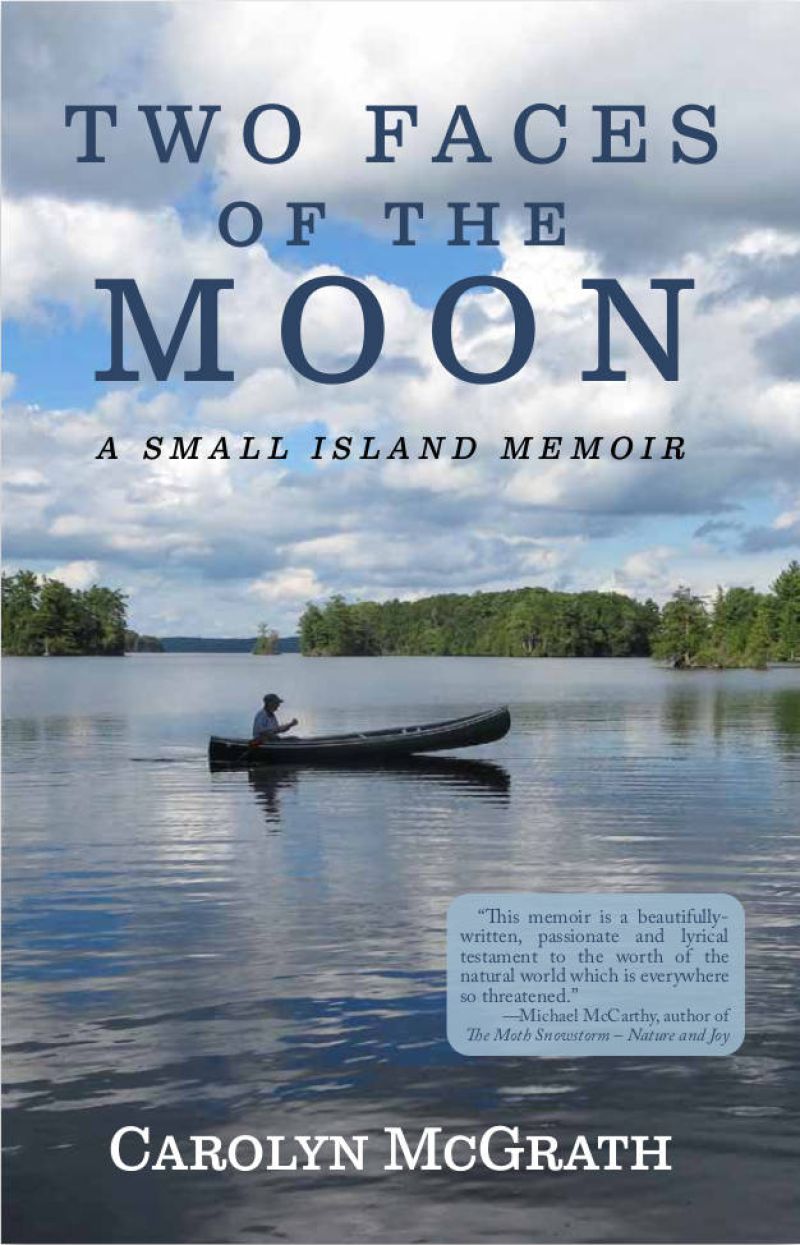Jeff Green | Jun 28, 2023
One of the reasons that Two Faces of the Moon is such a compelling read, is that the author, Carolyn McGrath, is as interested in the lives of her neighbours on Bobs Lake, as she is in telling her own story and that of her family.
Another is the scope of the story she tells. Although her memoir is set in the summer of 2001, which she spent in her cabin on an island on the lake, while her 96 year old mother was dying at the Sharbot Lake Seniors Home, it casts its gaze back to her childhood, the history of her family on the lake, and to their lives in the United States.
The point of departure in the memoir is the pending death of her mother This reality pushes her to remember, and re-evaluate events that took place at the cabin, on the island and among her neighbours on the lake, all the way back to early childhood.
The story of her father, who was a WWI vet who likely suffered from PTSD, and came alive in a certain way only at the lake, comes back to her as she looks at her own relationship with her father and mother in the context of the pending end of her mother's life.
Bobs Lake, the people and wildlife there, are all important characters in the book as well. The book contains rich detail about life at Bobs and Crow Lake, Bolingbroke and Sharbot Lake, throughout the decades right through to 2021.
The names and events are not changed, and the details that give the memoir its richness all ring true.
A few things emerge from this. Not only does it reveal how Carolyn McGrath comes to terms with her family relationships through an account of events on the island, it also chronicles what life was like for generations of families who made their lives on and around the lake in the second half of the 20th Century.
Early in Two Faces of the Moon, McGrath talks about two other books about Bobs Lake, which were written by Laura-Lee Davidson, early in the 20th Century. One was called a “Winter of Content” about a winter that Davidson spent on the lake, and the other was called “Isle of Eden”.
The theme of the lake being threatened by development, which is touched on in Two Faces of the Moon, was taken up back in 1924 by Davidson, who wrote: “Alas, we fear . . . that, all too soon, our lake will become known to campers. . . . Then motorboats will go snorting about, spoiling the fishing and frightening the herons and loons away to wilder waters, and our silence will be broken by boat-loads of “sports” yelling and singing in the twilight and moonlight.”
Two Faces of the Moon delves into the role that Bobs Lake plays in Carolyn McGrath's life. In a way, it is her essential home, the only connection to her father, who came alive on the island in a way he never did anywhere else. The same is true for her, in a way, spending summers, often alone, on the island with her two dogs.
The detail about her life on the lake, the light in the morning, the sounds at night, the reality of life with beavers and raccoons and foxes, the best way to cook frogs legs, are carefully described in the book, as are the visits to her mother, whose physical and mental strength are quickly ebbing away.
All of these accounts ring true, and while her mother no longer recognises her, Carolyn begins to see her mother anew as she faces up to the truth about her father, which is revealed as the memoir progresses. It is not as if she learns any hidden truths through the act of writing this memoir, she only writes what she already knows, but the act of writing the memoir reveals much to Carolyn McGrath about her parents, and about herself.
Because Two Faces of the Moon is so personal, so honest, and ultimately so well realised, readers of the book are drawn quite deeply into the cabin on the little island, and into the inner life of the author.
The book ends with a post-script about what has happened since 2001. The world has changed. The events of Sept. 11, 2001 took place at the end of that summer, impacting her family. There have been changes in the ecosystem and culture of Bobs Lake, from accelerating development to the impact of zebra mussels and other invasive species. She says that the lake is more in need of protection now than at any point in the past, as she passes responsibility for the island on to her son James.
“Two Faces of the Moon – A Small Island Memoir” is essential summer reading. It is being published by Brandylane Publishers, and will have its official launch on July 24. It is available now for pre-order from and Amazon and will be available after the 24th at Chapters/Indigo
More Stories
- Harrowsmith Public School and the Magic of Theatre
- You’re a Good Man Charlie Brown – a school wide effort at SHS
- Leadership From Within
- New Bulk Water Station in Sydenham
- Frontenac County Council looks at Healthcare Recruitment
- Good Turn Out Maple Fest Despite Rain
- Future looking brighter for Denbigh Fire Department says Chief
- Local Favourites featured at 2nd Annual SF Music Festival
- Perth Festival of the Maples, Saturday, April 27
- South Frontenac Council

